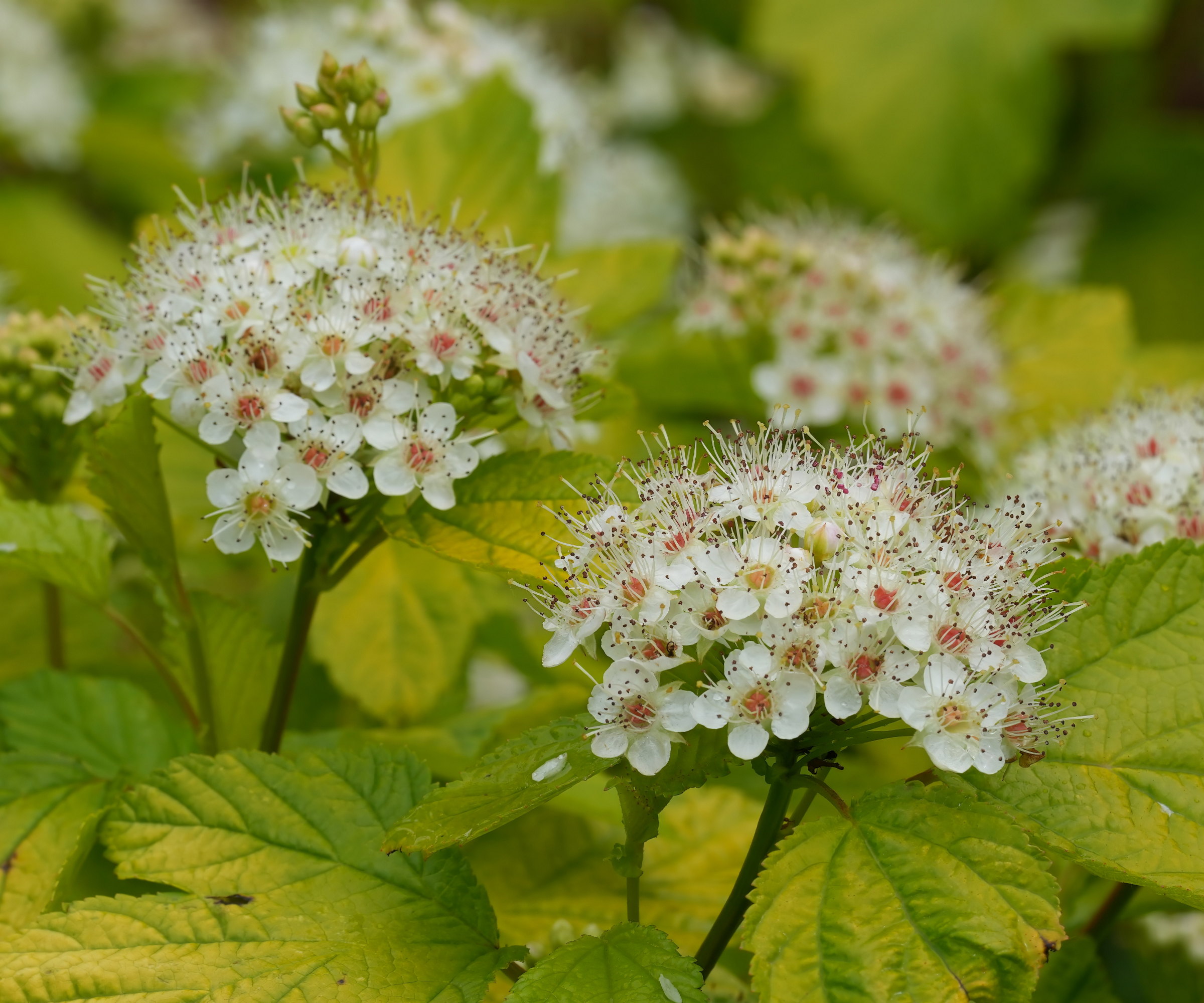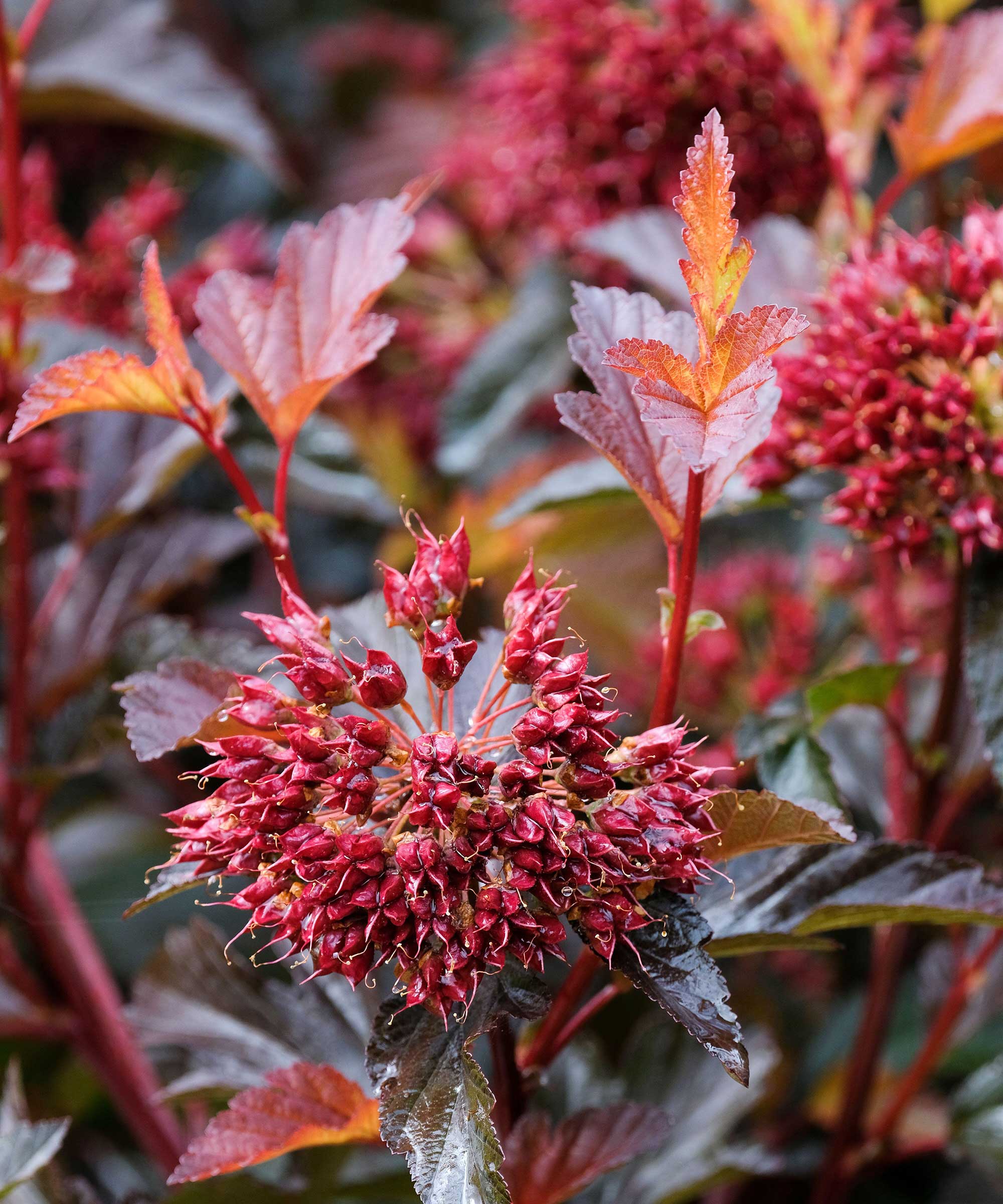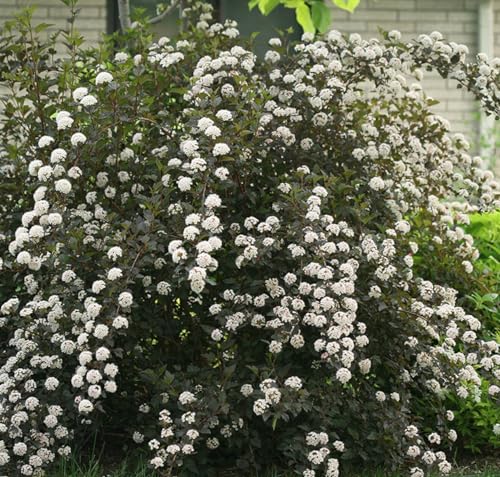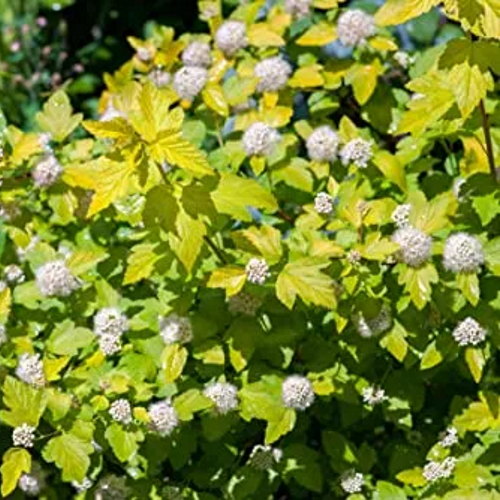How to grow ninebark – a native shrub with spectacular year-round interest, and that wildlife love
Ninebark offers more than the peeling bark that gives the shrub its name, but said bark is stunning too


If you are after a versatile, native shrub that offers real interest throughout the seasons and is easy to maintain, then ninebark ticks all the right boxes. It is a tough native shrub that you can plant and then enjoy the spectacular show year after year.
Also known as Physocarpus, ninebark is most famed for its peeling bark, which reveals vibrant layers underneath, but it offers much more than that. Ninebark offers year-round interest, with striking foliage, showy blooms, and decorative seed heads as well as the distinctive bark.
If you want to know how to grow ninebark, the good news is that it is a relatively undemanding shrub. We cover planting and maintaining the spring-flowering shrub and get some tips from experienced horticulturists so you can grow ninebark confidently and have healthy plants putting on eye-catching displays for years to come.

Why grow ninebark?
As well as being a fantastic ornamental addition to any space, ninebark is a low-maintenance shrub suitable for a range of different backyard ideas, from specimen to privacy shrubs in small yards or large landscapes.
The North American native plant offers year-round interest, from the late spring to early summer blooms to dark foliage and fruits in the fall, while the distinctive bark offers texture in a winter garden. Plus, ninebark is great for biodiversity in a wildlife garden.
‘Ninebark is particularly valuable for attracting pollinators, birds, and beneficial insects,’ says Tabar Gifford. ‘Its low maintenance needs and adaptability make it a reliable and ecologically smart choice for a wide range of garden styles.’
There are different varieties of ninebark, ranging from compact three-foot types ideal for smaller gardens to larger shrubs that reach ten feet tall and wide, and come in a variety of colors suitable for any planting scheme.
Design expertise in your inbox – from inspiring decorating ideas and beautiful celebrity homes to practical gardening advice and shopping round-ups.

Tabar is the Customer Experience and Partnership Cultivator at American Meadows and High Country Gardens. Tabar is also a Master Gardener and dedicated “plant geek,” who has a lifelong love for gardening and nature and a background in environmental studies. She gardens in zone 4 in Vermont.
Where to plant ninebark

Ninebark is a versatile shrub for US hardiness zones 3-7, and it can even thrive in what are sometimes trickier planting positions.
‘It’s highly adaptable to a variety of soil types - from average garden soils to clay soil - and tolerates both moist and well-drained conditions,’ says Tabar. ‘This flexibility makes it a smart option for rain gardens, slopes, or difficult-to-plant areas.’
It may be flexible, but what makes a perfect planting spot to grow ninebark?
Stacey Hirvela, experienced gardener and co-host of Gardening Simplified, claims: ‘Their ideal conditions would be a good sunny spot with at least six hours of strong sunlight each day during the growing season, well-drained soil, and a nice 2-3” layer of shredded bark mulch.’
Ninebark can grow well in part-shade, though any display is more vibrant when the shrub gets six hours of sunlight. At the other end of the scale, gardeners in hotter US hardiness zones will need to provide some shade from the strong afternoon sun.
The best time of year to plant the shrub is in early spring during dormancy. This gives the shrub time to establish roots before temperatures rise for summer. Alternatively, you can plant ninebark in the fall if you have milder winters.

Stacey Hirvela attended the New York Botanical Garden School of Professional Horticulture, followed by stints as a rooftop gardener in Manhattan, the horticulturist for the former Tavern on the Green restaurant in Central Park, and as a garden editor and radio host for Martha Stewart Living. She currently serves as marketing manager for Proven Winners ColorChoice Shrubs and co-hosts the radio show, podcast, and YouTube show, Gardening Simplified On Air
How to grow ninebark - Care tips

- Watering - Ninebark is low-maintenance, and Tabar Gifford admits: ‘Once established, it is drought tolerant and can thrive with minimal intervention.’ However, despite being a drought-tolerant shrub once established, you need to regularly water ninebark after planting. Even in the years ahead, watering plants during hot and dry periods will mean a better display.
- Feeding - Ninebark is not a demanding shrub. When in a rich soil type, it needs little additional fertilizing. Adding organic matter, such as compost or well-rotted manure, to the soil annually in spring will provide more than enough nutrients. Alternatively, Stacey Hirvela recommends: ‘Any general-purpose granular (not liquid) fertilizer will do. I recommend a rose fertilizer as your general flowering shrub fertilizer.’ A slow-release and balanced feed with an NPK ratio of 10-10-10 or 5-5-5 makes an ideal feed for ninebark in spring, such as this all-purpose fertilizer at Walmart. Avoid high-nitrogen feeds to fertilize shrubs and don’t feed in fall, as it is a fertilizing mistake that stimulates new growth easily damaged by winter frosts.
- Pruning - Ninebark requires little pruning and, most of the time, a little touch is all that is needed. The ideal time to prune the shrubs is after blooming in late spring to early summer, though this will reduce the amount of fruit on the shrub come fall. If you are growing ninebark as a hedge, it can be trimmed in spring. Remove any dead, diseased, or damaged branches and lightly trim the shrub for shape using clean and sharp pruning shears.
- Propagation - The best way to propagate ninebark shrubs is from plant cuttings. ‘Softwood cuttings taken in late spring or early summer are often the most successful,’ says Tabar. ‘Choose healthy, non-flowering shoots 4–6 inches long, remove the lower leaves, dip in rooting hormone, and plant in a moist, well-draining medium. Hardwood cuttings can also be taken in late fall or winter from dormant wood and overwintered under protection until roots form.’
- Pests - Ninebark do not suffer too much with pests, though aphids and spider mites can cause issues. These pests can be removed with a strong jet of water, insecticidal soap, or a homemade bug spray of water and dish soap. Companion planting around shrubs with flowers can attract beneficial insects to prey on aphids and spider mites, and plants such as marigolds and nasturtiums can repel pests away from ninebark shrubs when planted nearby.
- Diseases - The most common disease of ninebark is powdery mildew, which causes a white dusting on the plants during summer without doing too much damage. There are resistant cultivars you can plant, while thinning the center of the shrub and removing older stems will boost air circulation to prevent the issue. In a worst-case scenario, a copper fungicide spray (such as this copper fungicide at Amazon) can be used on shrubs. Leaf spot and fireblight can also occur, and any infected branches should be removed.
FAQs
How fast do ninebarks grow?
Ninebarks are fast-growing shrubs that can reach full size within 3-5 years, depending on the size at the time of planting and the growing conditions. It is thought they can grow as much as two feet per year.
Is ninebark invasive?
Ninebark is not classified as an invasive plant. Practically all Physocarpus species are native to North America, except for one (Physocarpus ribesifolia) that is native to northeastern Asia.
Is ninebark evergreen?
Ninebark is not an evergreen shrub; it is deciduous and loses its leaves at the end of each growing season.
Ninebark is a shrub that needs little maintenance to look splendid. Such resilient shrubs can be a blessing for a gardener, as they do their thing year after year without demanding too much attention.
If you want to see more of these easy-going plants, our guide to shrubs that thrive on neglect highlights five fantastic choices for low-maintenance and reliable shrubs to fill your garden with flowers, texture, and structure.

Drew has worked as a writer since 2008 and was also a professional gardener for many years. As a trained horticulturist, he worked in prestigious historic gardens, including Hanbury Hall and the world-famous Hidcote Manor Garden. He also spent time as a specialist kitchen gardener at Soho Farmhouse and Netherby Hall, where he grew vegetables, fruit, herbs, and cut flowers for restaurants. Drew has written for numerous print and online publications and is an allotment holder and garden blogger. He is shortlisted for the Digital Gardening Writer of the Year at the 2025 Garden Media Guild Awards.


